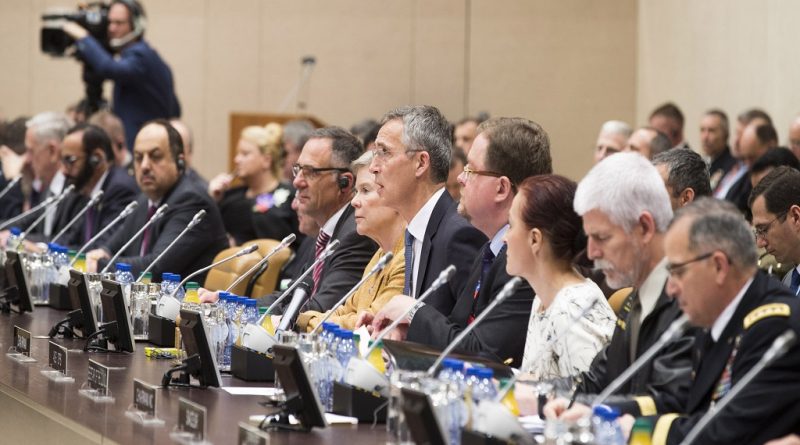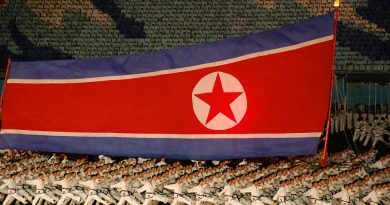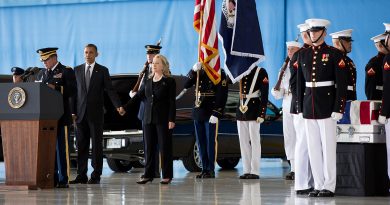The meeting of NATO Ministers of Defence in Brussels, November 8-9, 2017
The Ministers of Defence of NATO member states have met in Brussels, Belgium, on the 8th and 9th November 2017. This meeting aimed to discuss several different points in the agenda regarding, in general terms, present and future potential threats to the alliance with a special focus on North Korea, nuclear armaments within NATO boundaries, NATO’s role in Afghanistan, and the reform of NATO’s command structure.
Objectives of the meeting in the words of the NATO Secretary General
In a press conference the day before the meeting, NATO Secretary General Jens Stoltenberg described the main objectives of the meeting to the international press. Mr. Stoltenberg was clear in explaining that ‘defence ministers will take decisions to pave the way for our Summit in July, here in Brussels’.
The first element underlined by Mr. Stoltenberg was the review of NATO’s command structure to update it to the new challenges for the alliance. This review includes the creation of two new commands, one to ‘help protect sea lines of communication between North America and Europe’, and the other to ‘improve the movement of troops and equipment within Europe’ to increase NATO’s defence capabilities and deterrence. Another important point addressed by Mr. Stoltenberg was the need to include the cyber domain in NATO’s command structure.
The second point in the agenda presented by NATO Secretary General was the potential nuclear threat advanced by North Korea. As already stated by Mr. Stoltenberg weeks ago, North Korean ‘reckless behaviour’ is a global threat and for this it needs a global response, and NATO posture remains strong in its intent for deterrence.
The last point in the agenda is the review of NATO commitment in the operation Resolute Support in Afghanistan, for which the Afghan Defence Minister would take part in the meeting.
The results of the summit
In the press conference at the end of the first day of the meeting, Mr. Stoltenberg presented the decisions taken by NATO member states’ Defence Ministers. The participants all agreed to review NATO’s structure by creating two new Commands. The first Command will have the specific purpose of coordinating the sea transport between North America and Europe and manage the protection of those sea lines of communication. The second Command will coordinate and manage national infrastructures in Europe for the speedy transportation of troops and equipment.
From this point of view, Secretary General Stoltenberg was clear in stating that this review of the structure of the transatlantic alliance is necessary to increase its adaptability facing new threats. Furthermore, the implementation of the two new Commands will be accompanied by the work of each Defence Minister in his country to simplify the military procedures necessary for the swift work of the new Commands.
The creation of the two new Commands has clear implications in the relation between NATO allied countries and Russia, as Mr. Stoltenberg stated that no country could be considered now as a direct threat to any NATO country, but nonetheless Russia has recently been more ‘assertive’ from a military point of view. Another important element regarding this NATO structure’s review is the fact that the alliance has not created any new Command since the end of the Cold War, when it employed 22.000 personnel in 33 Commands, while now it has 7.000 personnel in only 7 Commands. From this point of view, a NATO Czech General assessed that Russia is a ‘potential threat’, while the creation of an Atlantic Command evokes echoes of the Cold War. Finally, the Atlantic Command could be created in the US, United Kingdom, Spain, or Portugal; the European Command could be destined to Germany for its central geographical position in Europe or to an Eastern European country.
Secretary General Stoltenberg also informed the press that a new Cyber Operation Centre will be created to improve NATO capabilities in cyber warfare and to improve the coordination among NATO countries regarding the cyber domain.
The results of this NATO Summit concerning the Resolute Support operation in Afghanistan were quite important too. The first element underlined by NATO Secretary General was the increase of the military personnel made available by the alliance and other partners from 13.000 to around 16.000 men and women. Furthermore, Mr. Stoltenberg affirmed NATO’s strong commitment to pacify Afghanistan countering Taliban activities in that country and in Pakistan. Finally, NATO Secretary General confirmed NATO’s financial commitment to finance Afghan security forces until at least 2020, and stated again that NATO’s mission in Afghanistan is a condition-based mission, i.e., it will continue until Afghan forces are considered self-sufficient to perform their tasks and keep their country at peace against the Taliban threat. Mr. Stoltenberg’s appreciations were essentially confirmed by General John Nicholson, Commander of NATO Resolute Support operation.
Regarding the North Korean threat and the meeting of the NATO Nuclear Planning Group, NATO did not release any press statement. Nonetheless, replying to a question by the Japanese press, Mr. Stoltenberg stated that, from NATO’s point of view, pressure on North Korea is the solution to the crisis; however, Russia and China have a fundamental role in this crisis for two reasons: the first is being permanent members of the UN Security Council like the USA; the second is sharing borders with North Korea – element that gives to China and Russia a crucial role to make sure that the international sanctions are fully implemented.
Opening remarks by NATO Secretary General Jens Stoltenberg at NATO Ministers of Defence meetings in Brussels, on November 8-9, 2017. Photo by NATO / Public domain
![]() This work is licensed under a Creative Commons Attribution-NonCommercial-ShareAlike 4.0 International License.
This work is licensed under a Creative Commons Attribution-NonCommercial-ShareAlike 4.0 International License.




